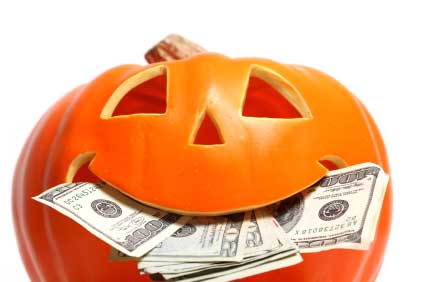Halloween, the sixth most celebrated holiday in the country, and the second highest grossing commercial holiday (after Christmas), isn’t largely viewed as a holiday which is capitalistic in nature, which, ironically, is exactly why shrewd businesses and capitalists are able to make soaring profits off it.
The idea of Halloween conjures up the images of kids going trick-or-treating, cute, funny, scary costumes, scary (and sometimes weird) decorations. It is unlike other holidays like Christmas, Thanksgiving and Easter, in the sense that it has neither a well renowned and serially retold origin story or is considered an actual holiday (which you can take off work) by the U.S. government.
Still, the holiday’s popularity is largely undeniable. Last year, roughly 170 million people in the country celebrated “All Hallows’ Eve,” as it’s also called. The figure expected for this year is likely going to match last year’s. To put into context, we can expect 71 percent of the population to get their spook on the eve of Oct. 31.
Unlike Christmas, Thanksgiving, Valentine’s Day, and other holidays, consumers don’t necessarily relate Halloween to capitalism and commercialism, hence, perhaps, the reason for its profitability. I like to think of Halloween as Capitalism’s secret love-child.
The numbers over the course of the last three tell years the whole story. According to the National Retail Federation (NRF), in 2010, average spending per person on Halloween was $66; in 2011, $72; and in 2012, $79. In 2012, the nationwide average spending on costumes $26, with $21 being spent on candy. Similarly, about $19 per person was spent on decorations.
When added up, the annual consumer spending on Halloween was a whopping $7 billion, two billion higher than the yearly average over the previous ten years. Americans spent $1 billion on child costumes and another $1.21 billion on adult costumes.
Even pets are getting in on the act—13.8 percent of participants plan to dress their pets. The expected spend for this category in 2013, according to the NRF is $330 million. $360 million is expected to be spent on greeting cards.
The numbers tell two things: America loves Halloween, and America is ready to spend its hard earned money on costumes, candy and spooky decorations.
An obvious possible reason for the love Halloween gets is the element and factor of escapism it provides to some celebrating the famous day. For one or two days every year, people get to be whoever they choose to be — be it Michael Jackson or a slutty nurse — without having to endure the heavy sting of judgement and criticism. It’s an opportunity as good as any other to escape reality for just a few hours.
Whatever the reason for the love Halloween receives, marketers and business don’t care; it’s music to their ears and zeros in their profit margins. According to Experian Marketing Services, a global information services company, this year, a very significant 49 percent of marketers will launch holiday campaigns just prior to Halloween.
This statement of intent by companies to hone into the niche which is Halloween could certainly be construed as proof of the level of commercialism the holiday has now attained—because that’s exactly what it is.
At the end of the day, with all things considered, this is a win for both sides of the equation. America gets to have fun pretending ghosts, witches, and Breaking Bad characters are real while simultaneously stimulating growth in the economy with purchases for the festivities. No harm there.
Halloween: capitalism’s secret weapon
October 24, 2013

Pumpkin Money
